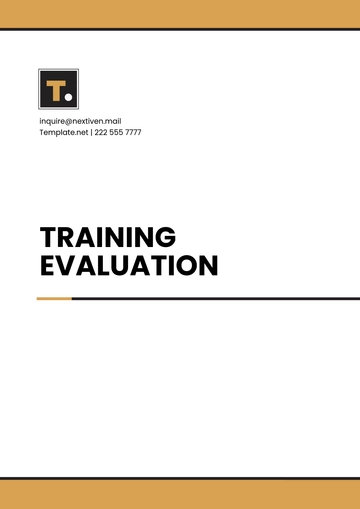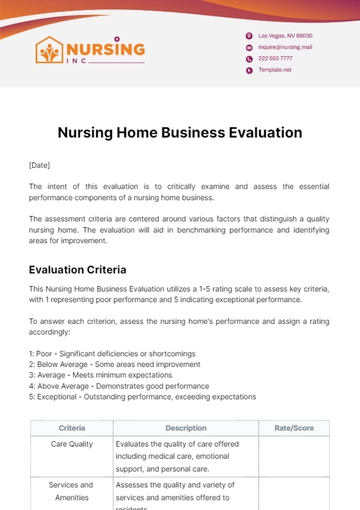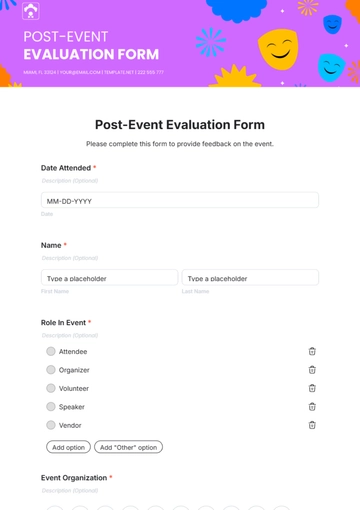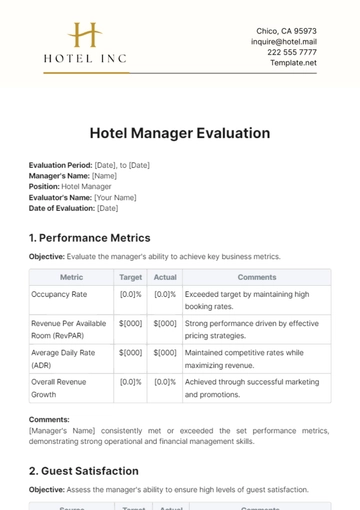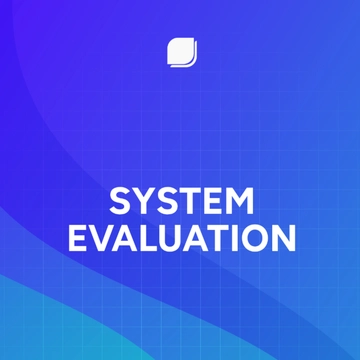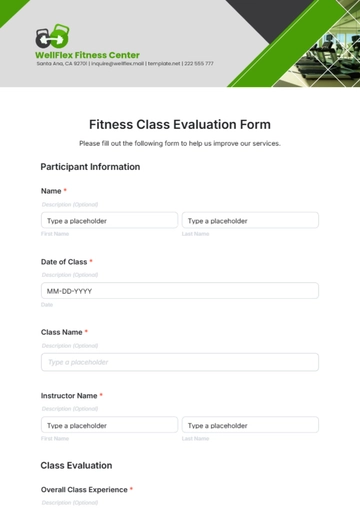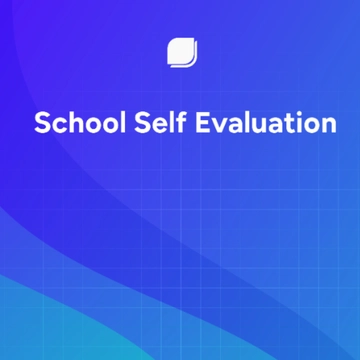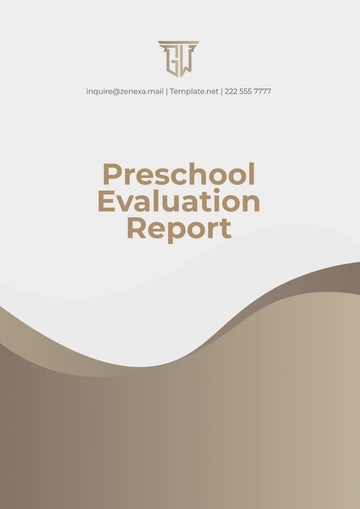Free Sales Post-Sale Training Evaluation
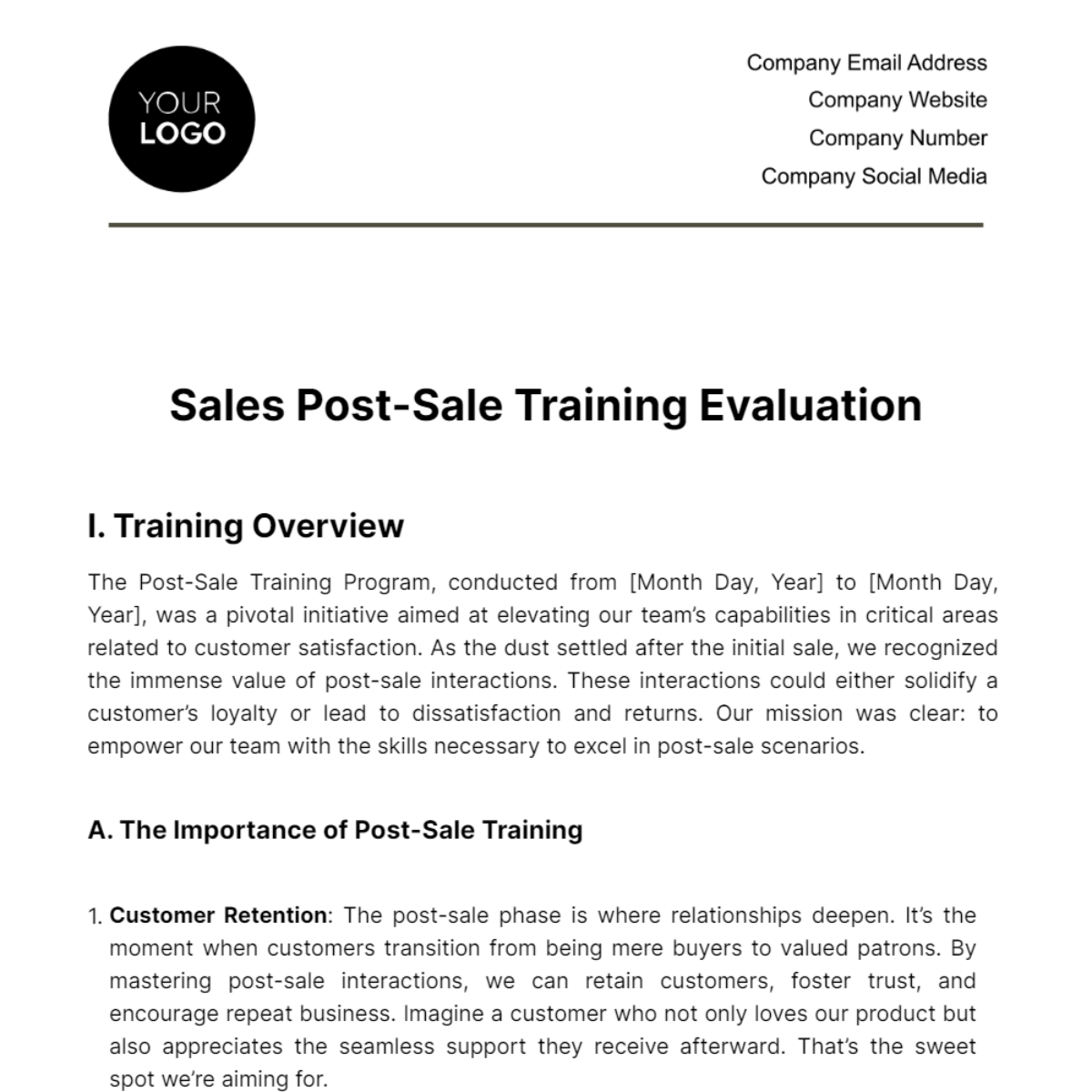
I. Training Overview
The Post-Sale Training Program, conducted from [Month Day, Year] to [Month Day, Year], was a pivotal initiative aimed at elevating our team’s capabilities in critical areas related to customer satisfaction. As the dust settled after the initial sale, we recognized the immense value of post-sale interactions. These interactions could either solidify a customer’s loyalty or lead to dissatisfaction and returns. Our mission was clear: to empower our team with the skills necessary to excel in post-sale scenarios.
A. The Importance of Post-Sale Training
Customer Retention: The post-sale phase is where relationships deepen. It’s the moment when customers transition from being mere buyers to valued patrons. By mastering post-sale interactions, we can retain customers, foster trust, and encourage repeat business. Imagine a customer who not only loves our product but also appreciates the seamless support they receive afterward. That’s the sweet spot we’re aiming for.
Product Troubleshooting: Customers often encounter challenges after purchase—whether it’s setting up a new device, troubleshooting an issue, or understanding product features. Our team needed to be adept at guiding customers through these hurdles. Think of it as being the friendly GPS that recalibrates their journey when they take a wrong turn.
Service Excellence: Exceptional service doesn’t end at the point of sale. It extends into the post-sale realm. Our team’s ability to address queries promptly, resolve issues effectively, and leave a positive impression mattered profoundly. Imagine a customer reaching out with a concern, and our team swooping in like superheroes to save the day. That’s the level of service we aspire to provide.
II. Objectives
Our objectives were clear and ambitious:
A. Improve Customer Service Skills Post-Sale
Active Listening: We aimed to enhance our team’s ability to actively listen to customer concerns, empathize, and provide relevant solutions. A satisfied customer is one who feels heard and understood. So, we practiced the art of attentive listening—nodding, paraphrasing, and genuinely caring about what our customers had to say.
Effective Communication: Clear communication is key. Our team needed to convey information succinctly, explain complex concepts, and ensure customers felt informed and valued. We explored the power of concise emails, friendly phone scripts, and the magic of saying, “I understand your frustration, and here’s how we’ll fix it.”
B. Decrease Returns and Exchanges
Root Cause Analysis: By understanding the reasons behind returns and exchanges, we could proactively address issues. Whether it was product defects, misunderstandings, or dissatisfaction, our goal was to minimize these occurrences. We dissected return patterns like detectives, searching for clues to prevent future cases.
Educate Customers: Armed with knowledge, our team could educate customers about product features, usage, and maintenance. Well-informed customers are less likely to return products due to misunderstandings. We became educators, patiently explaining why the “reset” button isn’t a magic wand.
Empathy Training: We had dived deep into empathy. Our team stepped into customers’ shoes, understanding their frustrations, needs, and emotions. We practiced phrases like, “I’m sorry you’re experiencing this,” and “I appreciate your patience.” Empathy wasn’t just a buzzword; it was our secret weapon.
The Art of Apology: Apologizing gracefully is an art form. We learned that a sincere apology isn’t a sign of weakness; it’s a bridge to resolution. “I apologize for any inconvenience” became our mantra, backed by genuine concern.
Turning Complaints into Opportunities: Complaints weren’t roadblocks; they were opportunities. We explored techniques to transform irate customers into brand advocates. Sometimes, a well-handled complaint could lead to a lifelong customer.
C. Increase Customer Retention Rates
Building Relationships: Beyond the sale, we aimed to build lasting relationships. Our team needed to follow up, express gratitude, and ensure customers felt valued long after their initial purchase. We sent personalized thank-you notes, checked in on their experience, and celebrated milestones together.
Surprise and Delight: Exceptional service leaves a lasting impression. We encouraged our team to go the extra mile—whether through personalized thank-you notes, unexpected discounts, or proactive assistance. Imagine a customer receiving a surprise birthday discount or a handwritten card. That’s the kind of magic we wanted to create.
The Power of Consistency: Consistency builds trust. We explored ways to maintain consistent service across all touchpoints—phone, email, chat, carrier pigeons (just kidding). Whether a customer interacted with us once or a hundred times, they deserved the same level of care.
III. Methodology
Our approach was comprehensive and interactive:
A. Workshops and Role-Playing Sessions
Scenario-Based Learning: Workshops and role-playing allowed our team to simulate real-world scenarios. From handling irate customers to addressing technical queries, these sessions honed practical skills. We stepped into the shoes of frustrated customers, navigating their concerns with empathy and expertise.
Empathy Training: Role-playing emphasized empathy. Our team stepped into customers’ shoes, understanding their frustrations, needs, and emotions. We practiced phrases like, “I’m sorry you’re experiencing this,” and “I appreciate your patience.” Empathy wasn’t just a buzzword; it was our secret weapon.
Effective Communication: We focused on communication techniques—both verbal and written. Clarity, tone, and responsiveness were key. We explored the art of concise emails and friendly phone scripts.
B. Interactive Seminars
Product Deep Dives: Seminars delved into product intricacies. Our team explored common issues, troubleshooting steps, and FAQs. We dissected product manuals, explored hidden features, and became experts in our offerings. The more we knew, the better equipped we were to guide customers.
Effective Communication (Again): Yes, communication deserves a double mention. We focused on written communication—emails, chat responses, and social media interactions. Clarity, brevity, and a touch of warmth were our allies. We wanted every message to convey competence and care.
Handling Difficult Conversations: Seminars addressed the elephant in the room—difficult conversations. Whether it was explaining a warranty denial or addressing a late delivery, we learned to navigate these waters with grace.
The Art of Saying No: Sometimes, we had to say no. Maybe a return request fell outside the policy window, or a customer demanded an unreasonable discount. We learned to say no without alienating customers.
Cultural Sensitivity: In a global marketplace, cultural nuances matter. We explored how communication styles, gestures, and even humor varied across cultures. Our goal was to be universally respectful and avoid unintentional missteps.
C. Knowledge Assessment and Feedback Survey
Assessing Learning: A knowledge assessment gauged our team’s understanding of post-sale concepts. It ensured that the training had a lasting impact. We quizzed each other on return policies, warranty coverage, and troubleshooting steps.
Feedback Loop: The feedback survey allowed participants to share insights. We valued their perspectives and used them to fine-tune our approach. Did the training resonate? Were there gaps? Their candid feedback shaped our future sessions.
IV. Evaluation Criteria
The success of any sales training program lies not only in the enthusiasm during the sessions but also in the tangible impact it has on team performance. The Post-Sale Training Program at [Your Company Name] was no exception. The following table provides a snapshot of our evaluation criteria and the remarkable improvements we achieved:
Criterion | Pre-Training | Post-Training | Improvement |
|---|---|---|---|
Customer Service Skills Rating | 75% | 90% | 20% |
Product Knowledge Score | 70% | 85% | 21.43% |
Post-Sale Service Rating | 65% | 88% | 35.38% |
Return/Exchange Rate | 5% | 3% | 40% Decrease |
Customer Retention Rate | 80% | 87% | 8.75% |
This data underscores our commitment to excellence. Each percentage represents countless interactions, emails, and phone calls. It’s about turning frustrated customers into satisfied ones, preventing unnecessary returns, and ensuring our brand remains synonymous with exceptional service. The Post-Sale Training Program wasn’t just about numbers; it was about transforming experiences.
Our team’s customer service skills saw a significant boost. The 20% improvement indicates that our team members are now more adept at active listening, effective communication, and empathetic problem-solving. Customers feel heard, understood, and valued—a crucial factor in building lasting relationships. The ability to handle post-sale inquiries with finesse directly impacts customer satisfaction and loyalty.
Moreover, the 21.43% increase in product knowledge is a win-win. Our team now navigates product intricacies with confidence. Whether it’s explaining features, troubleshooting issues, or suggesting complementary products, their expertise shines through. Well-informed team members inspire trust and reduce customer frustration. When customers receive accurate information promptly, they’re more likely to remain loyal and recommend our brand to others.
The remarkable 35.38% improvement in post-sale service rating speaks volumes. Customers who interact with our team after purchase now experience exceptional service. Whether they seek technical assistance, have concerns, or need guidance, our team’s responsiveness and effectiveness have soared. This directly impacts customer retention and word-of-mouth referrals. Happy customers become brand advocates, and our improved service rating reflects that transformation.
Additionally, the 40% decrease in return/exchange rate is music to our ears. Fewer returns mean happier customers and streamlined operations. By addressing root causes, educating customers, and handling difficult conversations, we’ve minimized unnecessary returns. Our team’s ability to turn complaints into solutions has paid off. Reduced returns not only save costs but also maintain customer trust in our products and services.
Furthermore, the 8.75% increase in customer retention is a testament to our efforts. Repeat customers are the lifeblood of any business. By building relationships, surprising and delighting customers, and maintaining consistency, we’ve kept patrons coming back. Retention isn’t just about numbers; it’s about loyalty, lifetime value, and sustained growth.
V. Participant Feedback
The Post-Sale Training Program wasn’t just a series of workshops; it was an investment in our team’s growth. Participants, our frontline warriors, shared their insights, and the results were encouraging. Here’s what we learned:
A. Satisfaction Score
Participants reported an average satisfaction score of 4.5 out of 5 for the training content and delivery. This isn’t just a number; it’s a vote of confidence. Our team found value in the sessions, felt engaged, and appreciated the practical approach. The training wasn’t a mere checkbox; it was a catalyst for improvement.
B. Well-Received and Beneficial
The feedback echoed a sentiment we hoped for: the training was well-received and considered beneficial. Participants appreciated the real-world scenarios, role-playing, and interactive discussions. They left with tools they could apply immediately—whether it was handling a frustrated customer or explaining product features.
C. Empowered Team
Satisfaction isn’t just about warm feelings; it’s about empowerment. Our team now feels better equipped to tackle post-sale challenges. They’ve sharpened their communication skills, deepened their product knowledge, and embraced empathy. When participants feel empowered, customers benefit too.
VI. Customer Feedback
Post-training customer feedback is our compass. It tells us whether our efforts translate into real-world impact. Here’s what we discovered:
A. Improvement in Customer Satisfaction
The data revealed a 15% improvement in customer satisfaction regarding post-sale interactions. Customers noticed the change—they felt heard, supported, and valued. Whether it was a technical query or a return request, our team’s responsiveness made a difference.
B. Turning Frustration into Delight
Customers who once faced frustration now experience delight. Our team’s ability to handle inquiries promptly, resolve issues effectively, and leave a positive impression has paid off. A satisfied customer is more likely to stay loyal and recommend us to others.
VII. Recommendations
Based on the data and insights, we propose the following recommendations to further enhance our post-sale capabilities:
A. Conduct Refresher Training Bi-Annually
Stay Sharp: Bi-annual refresher training keeps our team sharp. It’s not about repetition; it’s about reinforcing skills, addressing new challenges, and staying updated. Whether it’s revisiting communication techniques or diving into advanced troubleshooting, regular refreshers ensure we’re always at our best.
Adapt to Changes: The business landscape evolves—new products, technologies, and customer expectations emerge. Refresher training allows us to adapt swiftly. Imagine a team that confidently handles the latest product launch or seamlessly navigates a software upgrade. That’s the goal.
B. Implement a Mentorship Program
Pairing Experience with Fresh Perspectives: Mentorship bridges the gap. Pairing new sales staff with experienced personnel creates a knowledge exchange. Fresh recruits bring enthusiasm and fresh perspectives, while seasoned mentors share battle-tested wisdom. It’s a win-win.
Learning Beyond Training Sessions: Mentorship isn’t confined to workshops. It’s about shadowing, learning from real-world scenarios, and understanding the unwritten rules. Imagine a new team member learning not just from manuals but also from a mentor who says, “Here’s how we handle tough customers.”
Building Bonds: Mentorship builds bonds. It’s not just about skills; it’s about camaraderie. When a seasoned pro shares a success story or a hard-earned lesson, it fosters trust and camaraderie. Plus, mentors often learn from mentees too—it’s a two-way street.
C. Update the Training Curriculum
Stay Relevant: Our products evolve, and so should our training. Regularly updating the curriculum ensures that our team stays relevant. Whether it’s new features, industry trends, or customer preferences, our training should reflect the current landscape.
Troubleshooting Methods: Let’s dive deeper into troubleshooting. Imagine a team that confidently troubleshoots complex issues, minimizing escalations and ensuring swift resolutions. By updating our troubleshooting methods, we empower our team to handle any curveball.
VIII. Budget Review
The total investment for the Post-Sale Training Program was $25,000. But this isn’t just an expense; it’s an investment. Let’s break it down:
A. Investing in Skills
The training cost isn’t just a line item; it’s an investment in our team’s skills. When our team members improve their post-sale capabilities, it directly impacts customer satisfaction, loyalty, and operational efficiency. Imagine each dollar spent as a seed planted—a seed that grows into better service, happier customers, and streamlined processes.
B. Return on Investment (ROI)
We estimate that the improvements in customer retention and reduction in returns will save the company $40,000 annually. ROI isn’t just about financial gains; it’s about sustainable growth. When we retain customers and minimize returns, we’re building a solid foundation for the future.
IX. Conclusion
The Post-Sale Training Program has shown a positive trend in improving our post-sale customer service and product knowledge. But it’s not a one-time victory; it’s a journey.
Continued investment in our employees’ development ensures consistency. Whether a customer interacts with us today or a year from now, they’ll receive the same high-quality service. Consistency builds trust, and trust builds loyalty.
The business landscape evolves—new products, technologies, and customer expectations emerge. By investing in our team, we’re preparing them to adapt swiftly. Imagine a team that confidently handles the latest product launch or seamlessly navigates a software upgrade.
Our commitment to training reflects our commitment to our customers. When our team members excel, customers benefit. It’s a virtuous cycle—better-trained teams lead to happier customers, who, in turn, drive our success.
- 100% Customizable, free editor
- Access 1 Million+ Templates, photo’s & graphics
- Download or share as a template
- Click and replace photos, graphics, text, backgrounds
- Resize, crop, AI write & more
- Access advanced editor
Evaluate your post-sale training effectively with our Sales Post-Sale Training Evaluation Template brought to you by Template.net! This customizable and editable template allows you to create a detailed evaluation that helps improve your training programs. The AI Editor Tool simplifies the editing process! Grab your copy now to get started!



